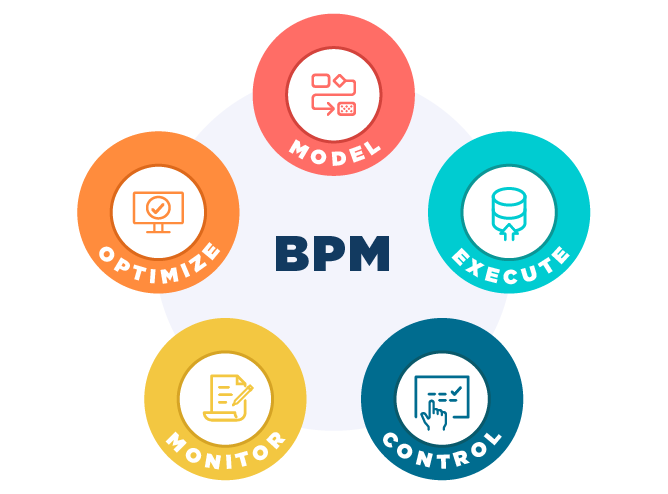
Despite their many organizational differences, corporations, government agencies and non-profits all share a common principle of delivering specific outcomes for customers or stakeholders. These outcomes are achieved through the design and implementation of connected operations, activities and workflows; also known as a “business process.”
Business Process Management (BPM) is the effort by which an organization defines, models, understands, improves and monitors those processes. BPM coordinates the behavior of people, systems, information, and things to support an organization’s strategy and goals. Given the critical link between processes and outcomes, it is not surprising that successful organizations spend considerable time and effort on process improvement.
In the past, BPM efforts were often focused on internal processes like finance, operations, or human resources and partner facing processes like supply chain. However, there is a growing focus – particularly in the expanding digital environment – on customer facing processes such as insurance claim processing, new subscription service onboarding, request government services, submit property taxes and so on.
Benefits of Business Process Management (BPM)
BPM focuses on delivering maximum value, as defined by an organization, in the most efficient manner possible. Organizations implementing BPM initiatives look to achieve the following benefits:
- Increased alignment of process to outcomes
- Meaningful and measurable costs savings
- Improved customer experience and satisfaction
- Revenue growth
- Higher quality products or services
- Increased process transparency
- Increased responsiveness
- Agility to quickly adjust to changing conditions
- Accelerate time to market
- Continuous improvement
Applying BPM to Your Organization
Most organizations are not static. They operate in larger, competitive environments that continually create new challenges and new opportunities. As an organization changes – grows, pivots into a new line of business or new market, faces new competitors, adjusts to new regulations – so too must its business processes. It’s important to recognize that processes do not operate in a vacuum. For this reason, it is useful to think about business processes as a set of discrete but connected activities involving a range of related stakeholders. Therefore, business processes must be specific to the stakeholder mission, tied to the larger organizational context, and current. To effectively achieve this within an organization, BPM efforts may vary widely in size, scope and complexity, however, most involve the following basic phases:
- Model – Identify, define and create a representation of the complete process so it can be easily understood and communicated
- Execute – Based on the model, develop and implement the process in a manner in which it can be repeatably performed. Apply automation if possible
- Control – Ensure the process is consistently followed
- Monitor – Collect meaningful and measurable data to determine the effectiveness of the process in delivering the expected value and benefits
- Optimize – Use the data collected through monitoring and feed back into the modeling, to determine if further process improvements can be made
In a rapidly changing world, organizations seeking to quickly deliver value to their customers and stakeholders have implemented BPM as an essential organizing practice. Organizations across a wide range of industries – Financial, Government, Insurance, Healthcare, Transportation to name a few – are realizing substantial return on Investment (ROI) from their BPM initiatives.
Leveraging Technology Solutions for BPM Initiatives
BPM initiatives employed by leveraging leading software platforms can effectively drive digital transformation initiatives across the enterprise. These solutions allow users to digitally model, build and run a variety of related processes and workflows to support strategic objectives. Collecting process data through monitoring features directly supports optimization efforts. Not surprisingly, the BPM solution market is broad, with a large number of vendors offering a wide range of products – everything from large, enterprise platforms to small products with a niche organizational focus.
As organizations seek to be more agile in their operations and better respond to new opportunities, some have turned to BPM vendors focused on “low-code” and ‘no-code” technologies that enable rapid development that can be performed by non-technical developers such as business analysts or subject matter experts.
Additionally, technologies such as Robotic Process Automation (RPA), Artificial Intelligence (AI), Analytics and Mobile applications are natural extensions of effective BPM initiatives with the potential to deliver significant benefit, not just for cost savings, but for greatly improved customer experiences.
Segue is actively engaged in enterprise modernization efforts for Federal and DoD clients. If you would like to discuss which option is best for your organization please contact us to learn more.